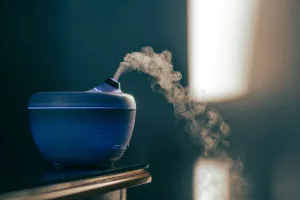Cupping therapy, an ancient healing technique practiced for thousands of years across cultures such as ancient Egypt, China, and the Middle East, has seen a resurgence in popularity in recent years. From professional athletes to celebrities, many advocates swear by its ability to relieve pain, promote relaxation, and enhance overall wellness. The technique involves using specialized cups to create suction on the skin, which is believed to stimulate blood flow and address various health concerns. The circular marks left behind—famously seen on athletes like Michael Phelps during the 2016 Olympics—have brought this age-old practice into the spotlight, sparking widespread interest and curiosity.
Modern practitioners of cupping therapy praise its holistic approach, which is believed to reduce muscle tension, alleviate pain, improve circulation, and even boost the immune system. While still considered alternative medicine, cupping therapy has gained traction in integrative medicine clinics and wellness centers worldwide. This article explores the history, methods, benefits, and science behind cupping therapy, providing insights for those curious about this timeless practice.
What Is Cupping Therapy?
Cupping therapy is a therapeutic practice in which cups are placed on the skin to create suction. This suction pulls the skin and underlying tissue upward into the cup, creating a vacuum effect. Practitioners believe that this process stimulates blood flow, encourages lymphatic drainage, and helps the body remove toxins. The method is also thought to release tension in muscles and fascia, promoting overall relaxation and recovery.
There are two primary types of cupping therapy:
- Dry Cupping: This method uses suction alone to stimulate circulation. Cups are placed on specific areas of the body for several minutes, either stationary or moved around to massage the skin and tissues.
- Wet Cupping: Also called “hijama,” this practice involves making small incisions on the skin after the suction process. Blood is then drawn out, which is believed to help remove toxins and balance the body’s systems. Wet cupping is more common in traditional Middle Eastern and Islamic medicine.
Modern cupping techniques may use heat, mechanical pumps, or silicone cups to create suction. Sessions are often customized based on the patient’s specific needs, such as relieving chronic pain, reducing inflammation, or addressing stress-related conditions.
The Historical Roots of Cupping Therapy
Cupping therapy has a long and rich history that spans several cultures and continents. Some of the earliest references to cupping appear in ancient Egyptian texts. The Ebers Papyrus, a medical document from 1550 BCE, describes cupping as a treatment for ailments like fever, pain, and internal imbalances. Egyptians believed in the therapeutic power of suction to remove toxins and restore harmony to the body.
In China, cupping became an integral part of Traditional Chinese Medicine (TCM). Practitioners used bamboo or ceramic cups to balance the flow of qi, or life energy, through the body. According to TCM principles, stagnant qi can lead to pain and illness, and cupping was seen as a way to release these blockages. Similarly, in Islamic medicine, cupping therapy (hijama) has been practiced for centuries, often inspired by teachings in Islamic texts that emphasize its health benefits.
Over time, cupping techniques evolved across cultures. In ancient Greece, Hippocrates—the father of modern medicine—used cupping to treat internal disease and musculoskeletal disorders. By the 19th century, European physicians had adopted the practice, further refining its methods and applications. Today, cupping remains a celebrated holistic therapy with both traditional and modern adaptations.
How Cupping Therapy Works
Cupping therapy works by creating suction, which lifts the skin and underlying tissues into the cup. This suction effect increases blood flow to the targeted area, promoting oxygenation and delivering nutrients to the tissues. Practitioners believe this process helps release tension, reduce inflammation, and support the body’s natural healing mechanisms.
The suction created during cupping stimulates several physiological responses:
- Increased Circulation: Blood flow to the cupped area is enhanced, which may aid in the removal of metabolic waste and improve tissue repair.
- Relaxation of Muscles and Fascia: The pulling effect on the skin and connective tissues helps relieve tension in muscles and fascia, making it particularly effective for reducing stiffness and soreness.
- Lymphatic Drainage: Cupping may promote the movement of lymphatic fluid, which helps detoxify the body and boost immune function.
During a session, the cups are typically placed on areas of tension, such as the back, shoulders, or legs. They can be left stationary or moved across the skin in a technique called “gliding cupping.” The circular marks left after a session are caused by blood pooling under the skin and usually fade within a few days.
Benefits of Cupping Therapy
Cupping therapy offers a wide range of benefits, making it a popular choice for individuals seeking relief from physical discomfort or stress. Below are the most common benefits associated with this practice:
1. Pain Relief
One of the primary reasons people seek cupping therapy is for pain management. The increased blood flow and reduced tension in the muscles help alleviate chronic pain conditions such as back pain, neck pain, and arthritis. Athletes also use cupping to recover from muscle soreness, enhance flexibility, and reduce recovery time after intense workouts.
2. Improved Circulation
By drawing blood to the surface, cupping therapy is believed to enhance circulation in targeted areas. Improved circulation helps deliver oxygen and nutrients to tissues, aiding in the repair of damaged cells and accelerating healing. This makes cupping particularly useful for individuals recovering from injuries or experiencing poor blood flow.
3. Reduced Inflammation
Inflammation is a common underlying factor in many chronic conditions, and cupping therapy is often used to reduce swelling and promote healing. The suction effect is believed to stimulate anti-inflammatory responses in the body, alleviating symptoms of conditions like tendonitis, bursitis, and joint pain.
4. Stress Relief
Many individuals find cupping therapy deeply relaxing. The physical release of muscle tension, combined with the calming nature of the treatment, can activate the parasympathetic nervous system. This promotes relaxation, reduces cortisol levels, and alleviates symptoms of anxiety and stress.
5. Respiratory Support
Historically, cupping has been used to treat respiratory conditions such as asthma, bronchitis, and congestion. By stimulating circulation and relaxing chest muscles, the therapy may help open airways and improve breathing. Some practitioners also believe it helps expel mucus and toxins from the respiratory system.
Scientific Perspectives on Cupping Therapy
While cupping therapy has a long history, its scientific validity remains a topic of debate. Research has shown promising results in areas like pain relief and recovery, but more rigorous studies are needed to fully understand its mechanisms and efficacy.
Some theories suggest that cupping therapy works by stimulating the body’s immune response, improving blood circulation, and activating the release of endorphins—natural painkillers produced by the body. However, skeptics argue that its benefits may stem from the placebo effect or the general relaxation it provides.
Despite the ongoing debates, cupping therapy has gained recognition in integrative medicine practices, often used alongside conventional treatments to address chronic pain, musculoskeletal issues, and stress-related conditions.
Types of Cupping Techniques
Cupping therapy encompasses a variety of techniques, each tailored to meet specific needs:
- Fire Cupping: The traditional method of creating suction by briefly introducing a flame into the cup to remove oxygen before placing it on the skin.
- Vacuum Cupping: A modern technique that uses mechanical pumps to create suction without the use of fire, offering greater control and precision.
- Moving Cupping: Also known as “gliding cupping,” this technique involves moving the cups along the skin after suction is applied, combining the benefits of massage and cupping.
- Wet Cupping: Involves making small incisions on the skin after suction to draw out blood, a practice commonly used in Islamic medicine.
Is Cupping Therapy Safe?
For most individuals, cupping therapy is considered safe when performed by a trained professional. However, there are potential risks and contraindications to consider:
- Minor side effects, such as redness, swelling, or mild discomfort, are common but temporary.
- Not recommended for individuals with bleeding disorders, skin conditions, or serious medical conditions.
- Pregnant individuals or those taking blood-thinning medications should consult a healthcare provider before trying cupping therapy.
To minimize risks, it’s essential to ensure proper hygiene and sterilization of the cups and tools used during the session.
Final Words
Cupping therapy is a unique practice that bridges the gap between ancient traditions and modern wellness. Its potential to alleviate pain, reduce inflammation, and promote relaxation has made it a valuable tool in holistic healthcare. While scientific research is still catching up, many people find cupping to be an effective and rejuvenating addition to their self-care routines.
Whether you’re seeking relief from chronic pain, recovery from physical exertion, or simply a moment of relaxation, cupping therapy offers a therapeutic experience that continues to stand the test of time. By consulting a qualified practitioner, you can explore this ancient healing method and discover its potential benefits for your health and well-being.




